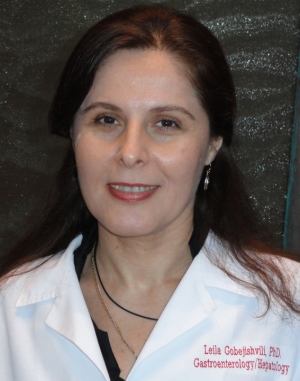Pathogenic Role of PDE4 in Hepatic Stellate Cell Activation & TGF Signaling
Overview
Liver injury of different etiologies leads to a wound healing process involving activation of HSCs. However, ongoing hepatocyte injury and inflammation result in uncontrolled activation/proliferation of HSCs and development of fibrosis. Understanding the exact mechanisms regulating conversion of quiescent HSCs into active, proliferating myofibroblasts will enable development of much needed therapy for liver fibrosis. The second messenger cAMP plays a critical role in regulating multiple cellular functions through its effector molecules PKA and EPAC. In relation to fibrotic processes, these effector molecules have been shown to attenuate TGF-β-induced gene expression in non-hepatic fibroblasts. PDE4 accounts for the majority of cAMP hydrolysis activity in cells resulting in decreased cAMP levels and PKA/EPAC activity. Dr. Gobejishvili’s recent work shows that quiescent HSCs do not express PDE4; rather, it is rapidly induced upon HSC activation and precedes induction of activation marker αSMA. Inhibition of PDE4 activity attenuated the process of HSC trans-differentiation in vitro and in vivo suggesting that PDE4 plays a critical role in fibrogenic signaling.
Hypothesis
Induction of PDE4 enzymes in HSCs plays a causal role in their activation process by decreasing cAMP-PKA/EPAC activities and promoting fibrogenic signaling.
About Researcher
Principal Investigator

Leila Gobejishvili, PhD
Assistant Professor of Medicine
Education
- PostDoc
- Physiology and Biophysics, University of Louisville
- Medicine, University of Louisville
- PhD
- Institute for Physiology, Georgian Academy of Sciences, Tbilisi, Georgia
Related Project
The Role of Hepatocyte cAMP/PDE4 in Alcohol-Induced Liver Steatosis and Injury
